Crunches are a typical bodyweight exercise to work out your abs. You can use the crunch variations to spice up your workouts and target different core muscles.
Crunches can be a great exercise to isolate your ab muscles. Even so, you may be interested in targetting a variety of other core muscles or changing up your core workouts.
For both of these situations, there are a variety of crunch variations that can help you out. These implement different movements, arm positions, leg positions, fitness equipment options, etc.
These crunch variations are not always that much more effective for training your core muscles but they can definitely make your workouts more fun.
Some of the exercises below work out one side of your core at a time. In these cases, you should not forget to do the same duration or number of repetitions on each side to avoid muscle imbalances.
1. Regular crunch
Before going into all the variations on this list, it can be helpful to go over the regular crunch since it is the starting point for most of the other exercises.
For crunches you preferably want a yoga mat or other soft surface to lie on. To do a crunch take the following steps:
- Lie down on your back with your legs bent at the knees and your feet flat on the ground. You can place your hands next to your head, cross them over your chest, or put them anywhere else. The point is to not really use your arms or move them during the exercise.
- Slowly raise your shoulders from the ground as much as possible while keeping your lower back on the floor. Make sure you don’t use your arms but your ab muscles to do this movement. Move your head along with your shoulders while keeping it in a normal position.
- Lower your shoulders and head in a controlled motion until you are back in the starting position. If you plan to do more repetitions you can keep your lower back pressed against the ground with the help of your abs.
Regular crunches alone are a great way to work out your ab muscles. More specifically the upper and middle parts.
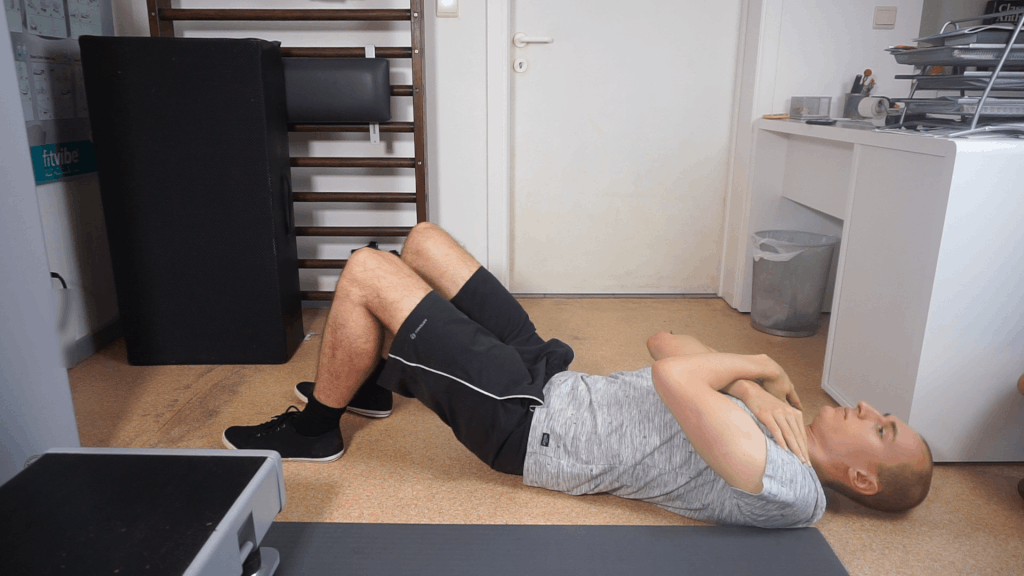
2. Oblique crunch
Oblique crunches are a variation where you twist your hips but keep your upper body more or less pointing upward. This makes it so, as the name implies, oblique crunches focus more on your oblique muscles.
At the same time, your abs still have to work a good amount.
Make sure you don’t twist too far to avoid any injuries. Even with the right technique, oblique crunches are not for everyone. If you have any back, neck, hip, or shoulder issues you may want to pass on this type of crunch.

3. Side crunches
Side crunches take the different direction of oblique crunches one step further. This leads to even more focus on your oblique muscles and less focus on your ab muscles.
You can stretch your upper arm above your head or hold a weight to make the movement even harder for these muscles.
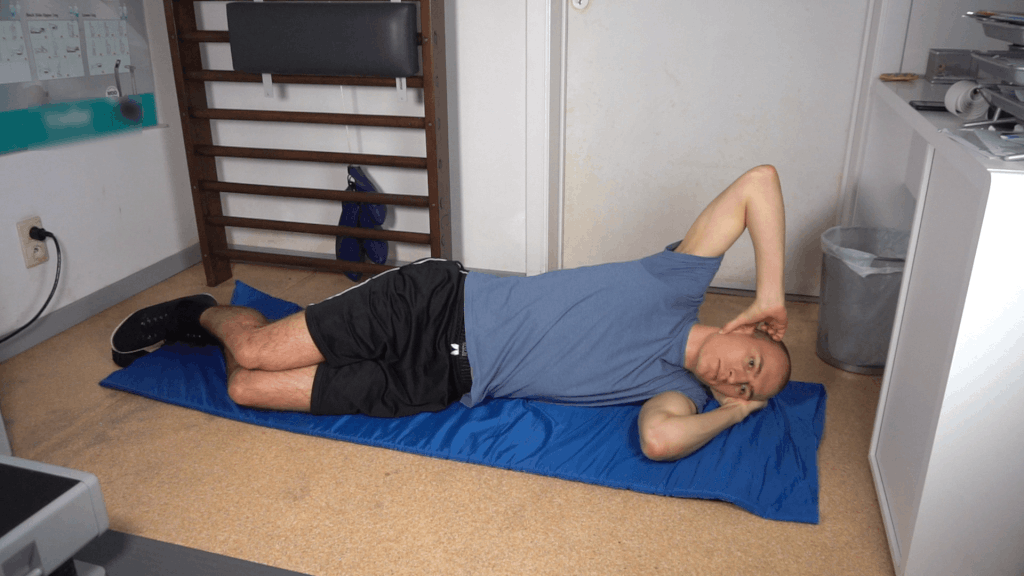
4. Bicycle crunch
Bicycle crunches, also known as air bikes crunches, are a type of crunch where you keep your shoulders elevated, move one shoulder to the hip of the opposite side, and at the same time cycle back and forth with your legs in the air.
This exercise is mostly done to grow and strengthen your oblique muscles. Your abs will also have to work isometrically, in a static way, a good amount.
You can put your hands behind your head but make sure you don’t jerk your neck forward. Your arms should not really exert any effort during the movement.

5. Reverse crunch
For this next crunch variation, you raise your upper legs and keep both your hips and knees at 90-degree angles throughout the rest of the exercise. After that, you move your hips towards your chest and back in a controlled motion.
Reverse crunches are a great way to learn how it feels to work your lower abs without engaging your hip flexor muscles. This skill will be helpful for many of the other crunch types on this list.
Additionally, the reverse crunch on its own is already a great way to work your ab muscles and more specifically the lower and middle part.

6. Double crunch
This next type of crunch involves slowly moving your knees towards your chest as far as comfortable and doing a regular crunch at the same time.
If you want double crunches to work the lower and upper parts of your abs, you don’t want to use the leg momentum created by your hip flexors. Keep your movements slow and controlled to do this.

7. Weighted crunch
Weighted crunches are simply regular crunches with some type of extra resistance in your hands or against your chest. This variation can offer many benefits, including faster and more muscle growth and strength progress.
Some examples of crunch exercise equipment options you can use for this include a dumbbell, weight plate, kettlebell, but also simple household objects like a heavy backpack or grocery bags.
8. Cable crunch
While you could include cable crunches in the weighted crunch category. This variation offers a relatively unique advantage that makes it so cable crunches deserve their own option.
The cable machine is a piece of fitness equipment where a steel frame holds weights and pulleys. Thanks to the cable going through these pulleys and attached to these weights you can do weighted crunches while on your knees or standing up.
Regular crunches and other floor variations can be uncomfortable on the backs of some people. Cable crunches allow you to avoid this while offering a challenging ab workout at the same time.
9. Exercise ball crunch
An exercise ball, also known as a stability or yoga ball, is a soft elastic ball. You can use this piece of fitness equipment to do more unique exercise ball exercises or to modify existing exercises like the crunch.
For optimal ab muscle engagement, you want to put the exercise ball against your lower back (1). Doing exercise ball crunches the right way can offer slightly more benefits than the regular crunch.
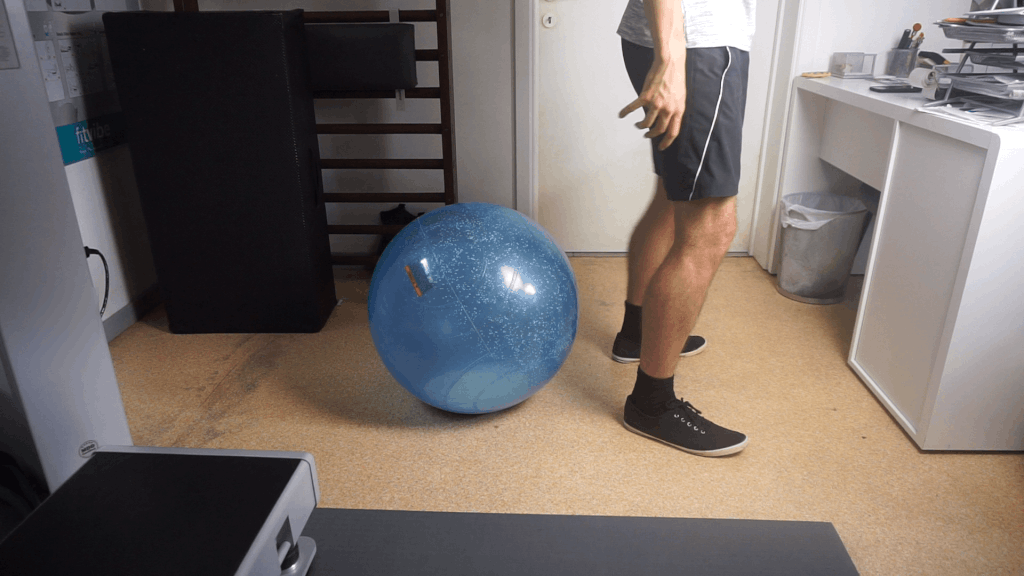
10. Bosu Ball crunch
Bosu Balls are a different piece of fitness equipment. You can describe these as the top of a stability ball attached to a flat surface.
Similar to exercise balls you can use Bosu Balls both to do unique exercises or modify others like the crunch. For optimal ab muscle engagement, you want to put the Bosu Ball under your lower back.
Bosu Ball crunches make it so your ab muscles go through a larger range of motion than regular crunches. This can lead to more ab muscle engagement and in turn, muscle growth and strength progress.
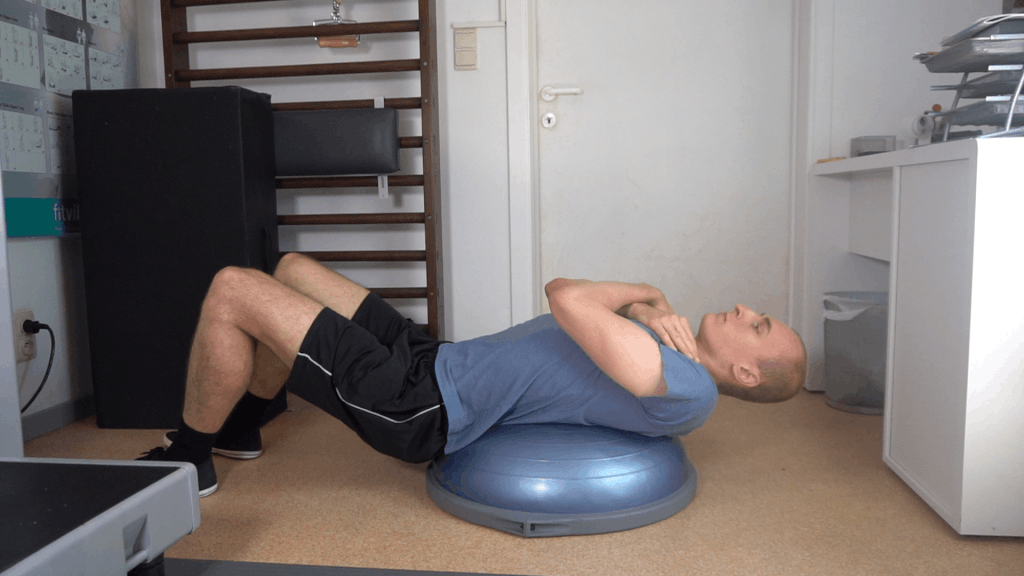
11. Machine crunch
There are a variety of gym machines that can be used to train your ab muscles. One of these is the ab crunch machine.
This machine basically allows you to do crunches against resistance while seated. Additionally, you crunch in a fixed range of motion.
A benefit of machine crunches is that they are a relatively convenient way to do crunches with a lot of extra resistance. To see a lot of muscle growth and strength progress this can be a very effective type of crunch.
A downside is that some people find these machines uncomfortable, even when selecting the most optimal settings for them personally.
12. Standing crunch
Standing crunches involve the same movement as regular crunches but you stand up straight. This variation engages the same ab muscles but to a smaller extent since gravity helps out a lot.
The main reasons why people turn to standing crunches is that they can be more comfortable on your back and due to personal preference.

13. Standing bicycle crunch
For this next exercise you start standing up straight. After that, you move one shoulder to the hip of the opposite side while moving this hip towards the shoulder.
This engages your ab and oblique muscles a small amount but gravity helps a lot with the movement. For optimal core training, you likely want to choose other exercises than standing bicycle crunches.
Nonetheless, some people find the standing core exercises more comfortable. Even if this means less effectiveness.

14. Standing oblique crunch
As the name implies, this next crunch variation is the standing version of the oblique crunch. This means it mainly focuses on your oblique core muscles.
The downside is that gravity helps your shoulders get closer to your hips. Even so, your core muscles still have to work to bring your hip towards your shoulder.
Standing oblique crunches are not the worst standing core exercise but there are many floor variations that are generally more effective. Especially since you can’t really add a lot of extra resistance to this type of crunch.
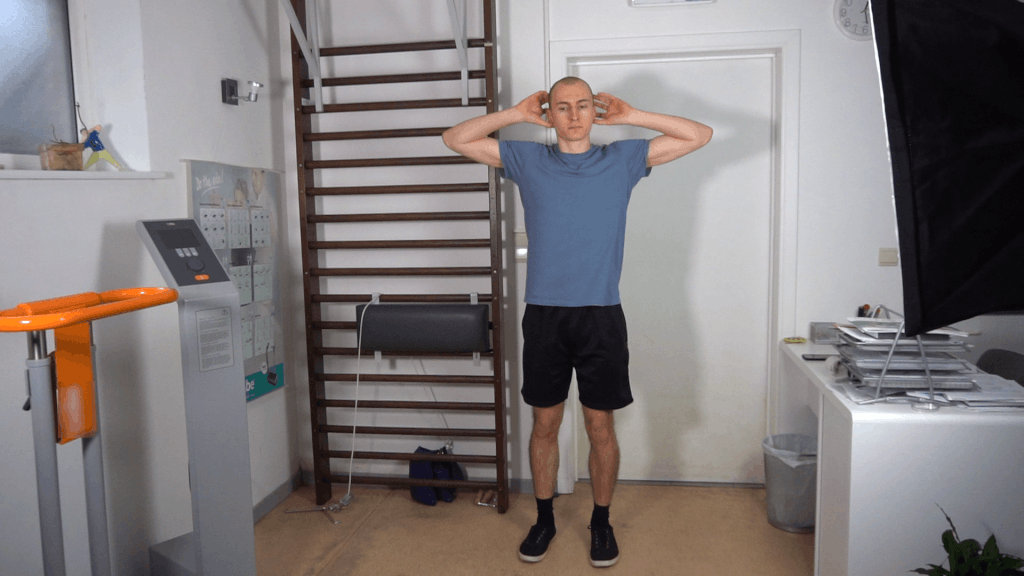
15. X crunch
X crunches combine a sideways crunch with a sideways leg raise. This makes the movement focus on both oblique and ab muscles. Additionally, your hip flexor muscles will have to work to a certain extent.
One thing to keep in mind if you want to target your core muscles with this crunch type is to avoid using the momentum of your arms and legs for the movements.

16. Janda crunch
A potential downside of ab exercises like crunches and especially sit-ups is that your hip flexor muscles tend to do a lot of work too. This is not a bad thing in itself but can slow down your ab training.
Janda crunches are done to reduce how much your hip flexors work.
For this exercise you need to do crunches on an edge or with bands around your ankles. To do the exercise you then press your ankles back before doing the regular crunch motion with your upper body.
The idea is that by engaging your hamstring and glute muscles, the opposite muscles of the hip flexors, you reduce some of the hip flexor engagement during crunches.
17. Vertical leg/raised leg crunch
Vertical leg crunches, also known as raised leg crunches, are a variation where you stretch your legs as much as comfortable and point them upward. If you have tight hamstrings your legs will likely not be stretched entirely.
By changing up the position of your legs you make the exercise slightly more comfortable on your lower back. Additionally, you train flexibility in your hamstrings a tiny amount with vertical leg crunches.
The downside is that your ab muscles go through a slightly smaller range of motion. This is generally not helpful for muscle growth and strength progress.

18. Suitcase crunch
This next exercise is basically a combination of lying leg raises and a regular crunch. Suitcase crunches still focus on your abs but both the lower and upper parts.
One potential downside is that you can use the momentum of your legs created by your hip flexors instead of your abs. Make sure you know the feeling of engaging your abs instead of your hip flexor muscles to avoid this.

19. Side plank crunch
This next exercise is both a crunch and side plank variation. You start in the side plank position and then crunch the top shoulder towards the upper hip.
Side plank crunches engage your oblique and outer thigh muscles in a static way. On top of that, you engage your ab muscles to some extent.
This type of crunch is not the most effective due to the direction of gravity but it can be a fun way to engage a variety of core muscles.

20. Bird dog crunch
The bird dog exercise is a movement where you start on your hands and knees. After that, you raise one arm forward and upward until it is horizontal. At the same time, you stretch the leg of the opposite side.
Bird dog crunches are a variation where you crunch together with these lifted body parts instead of going straight to starting position like the regular version.
Bird dogs are a way for people with weak backs to get started with core training. Bird dog crunches even more so.
That being said, if you don’t have any back issues, there are many types of crunches on this list that will offer more muscle growth and strength progress in a shorter amount of time.
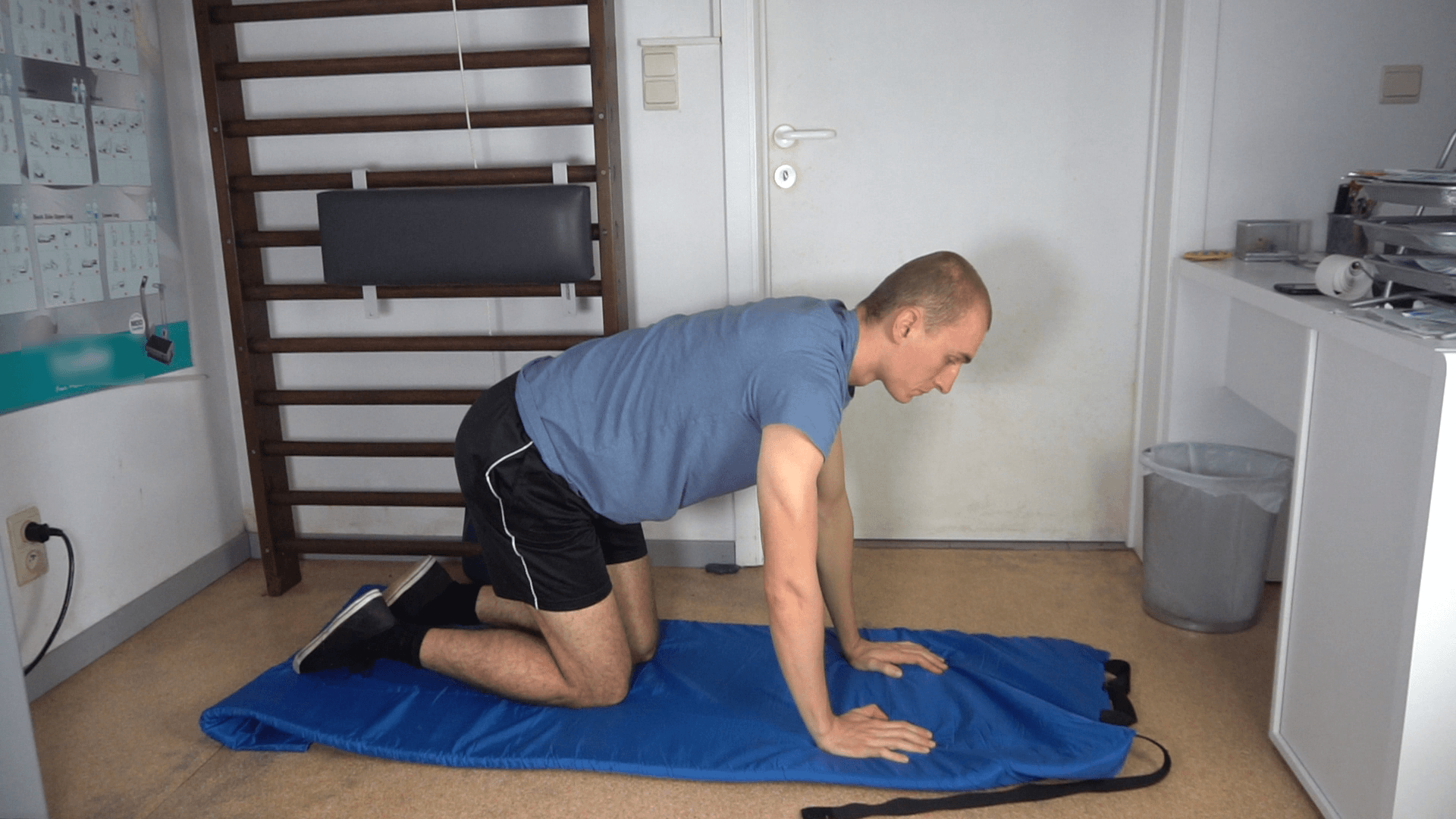
21. Penguin crunch
To do this next exercise, you crunch up your shoulders and then move sideways to each side alternately.
Penguin crunches offer a beginner-friendly way for beginners to strengthen their oblique muscles. You do engage your ab muscles isometrically, but these are not really the main target of the exercise.
If you are more advanced when it comes to oblique muscle training, you likely need to do other crunch variations to see a lot of muscle growth and strength progress.

22. Spiderman crunch
Spiderman crunches can be described both as a high plank and crunch variation. To do the exercise you start in a high plank position.
After that, you move one knee to the elbow of that side, return to starting position, and repeat on the other side.
During spiderman crunches your abs will work in a static way to keep your body straight. Additionally, your oblique muscles will help move your hips towards the shoulder of each side.
This is not the most effective crunch variation in terms of muscle growth and strength progress potential. Even so, it can be a fun way to switch up your workouts.

23. Knee crunch
To do the next crunch variation you simply raise your upper legs until they are vertical, keep your knees at a 90-degree angle, and crunch like you normally would.
Knee crunches, also known as tabletop crunches, are generally more comfortable for your lower back. The downside is that your ab muscles go through a smaller range of motion during this crunch type.
Knee crunches are different from vertical leg crunches in that they do not work on hamstring flexibility.
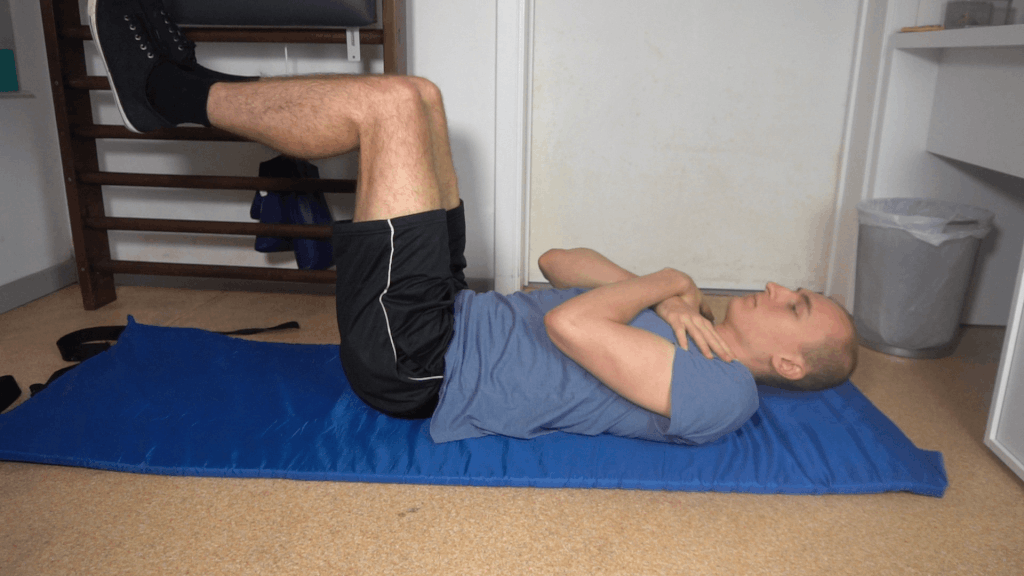
24. Twisting crunch
Twisting crunches start in the same position as knee crunches but instead of crunching up, you raise your shoulders sideways.
This makes it so the movement also works on your oblique muscles on top of the ab muscles that are involved in crunches.
The upsides and downsides of knee crunches still apply. On the one hand, raising your legs can be more comfortable on your lower back. On the other hand, this does limit your range of motion a small amount.

25. Cross(over) crunch
Crossover crunches, also simply known as cross crunches, are a variation where you put one foot on the upper leg of the other side and then move the shoulder of the opposite side towards the side of the raised leg.
The sideways movement makes the exercise focus more on your oblique muscles. Raising your foot can be more comfortable on your lower back and offer a bit of stretching.
A small downside of this crunch variation is that your range of motion is slightly smaller. This is generally not helpful for muscle growth and strength progress.

26. Decline crunch
For this next exercise you need a sit-up bench. This is a decline bench with pads to anchor your feet behind at the top. To do decline crunches you simply take place on this bench and do crunches like you normally would.
Due to the different angle, this crunch variation will be slightly harder on your abs. That being said, the difference will likely not be that big. A sit-up bench can be nice to have but it won’t make or break your core muscle workouts.
27. Pike crunches
Pike crunches are another exercise ball exercise. To do this movement you start in the exercise ball plank position with the ball under your knees.
After that, you roll the ball forward by crunching up your body. Make sure you don’t lower your hips too much at the bottom of the movement.
Pike crunches are more of an exercise to train balance and coordination while also engaging your core muscles a nice amount.
Your lower abs and hip flexors will have to work to a certain extent but there are crunch types that are more challenging for these muscles.

28. High crunch
This next exercise is very similar to regular crunches but you keep your hands as high as possible throughout the movement. Make sure you don’t swing your arms to keep this variation focused on your ab muscles.
High crunches do look different from regular crunches with your hands against your chest but the effects are basically the same.

29. Long arm crunch
Long arm crunches require you to stretch your arms backward above your head. Due to the different angle of your arms compared to your body, long arm crunches actually make the exercise slightly harder.
This makes it so long arm crunches offer a tiny amount more muscle growth and strengthening compared to the regular version.
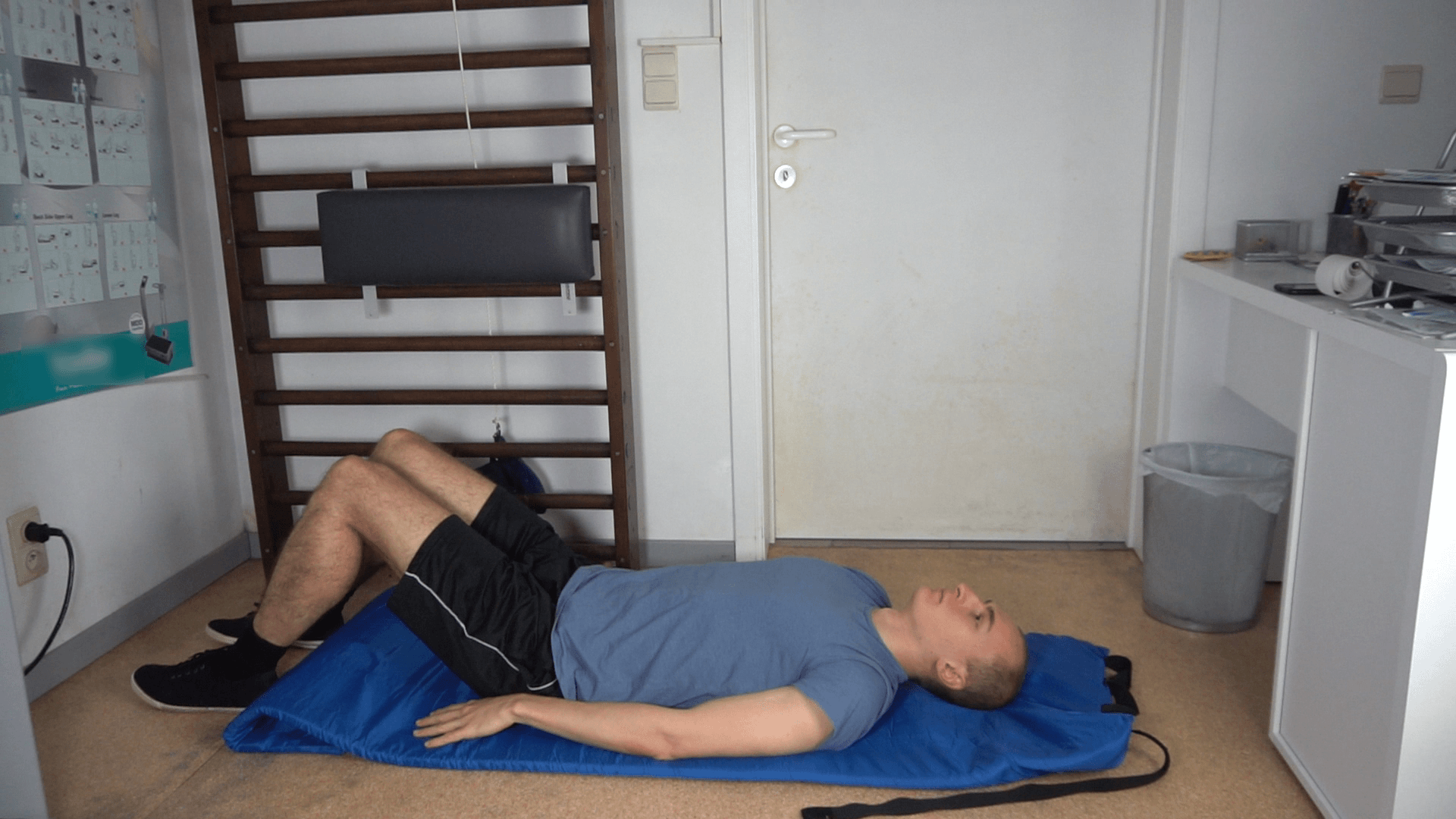
30. Hanging crunch
For this next variation you need something like a pull-up bar or captain’s chair. Once you have that, hang from the bar or take place in the captain’s chair.
To do the exercise slowly raise your knees as far as comfortable and lower them again in a controlled motion.
Hanging crunches, also known as hanging knees raises, engage your hip flexor and ab muscles.
If you want to focus as much as possible on your ab muscles it can be helpful to start with reverse crunches, a previous variation. This exercise helps you get a feel for how it feels to engage these muscles without using your hip flexors.
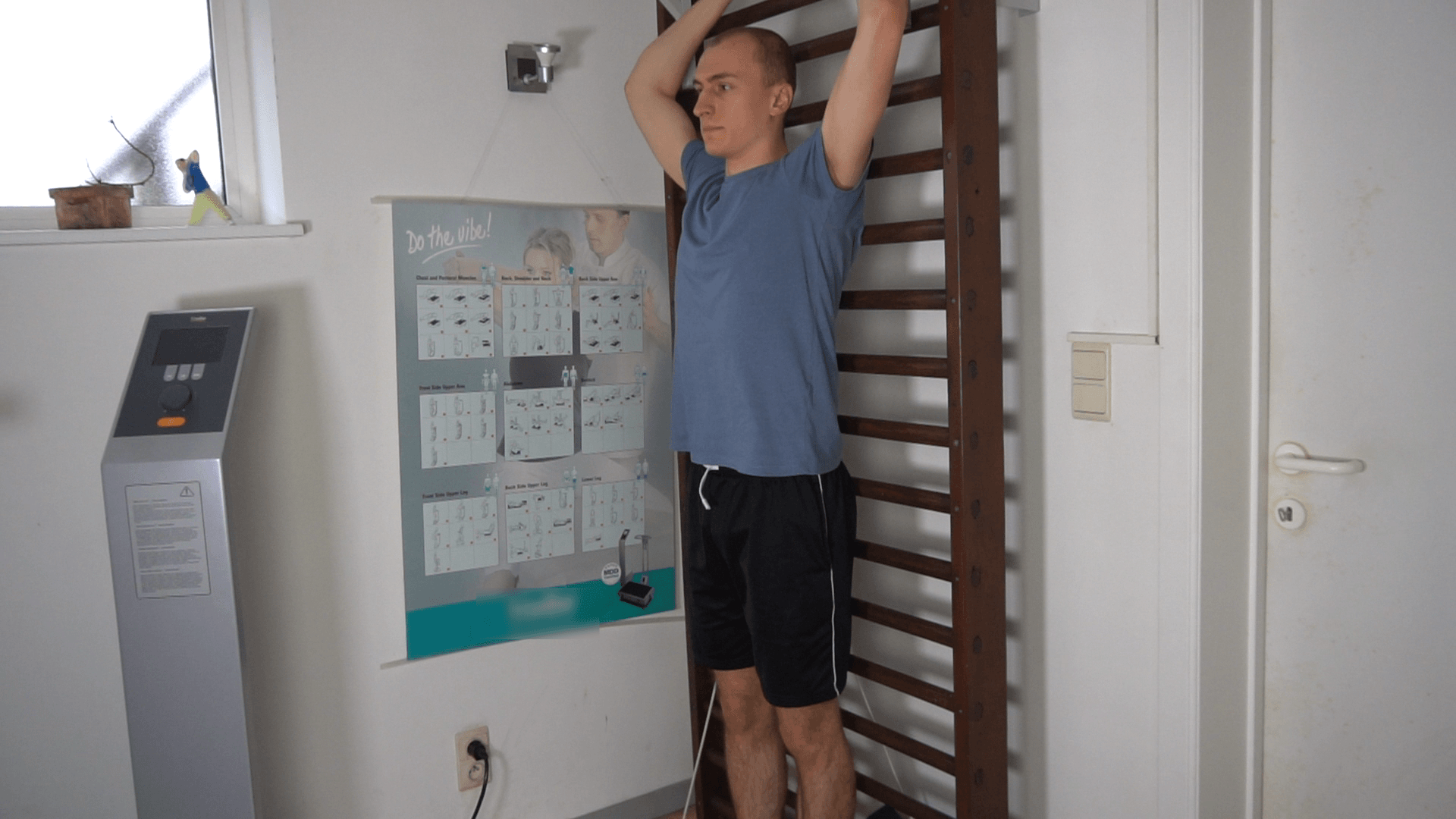
31. Triangle crunch
To do triangle crunches you start leaning on one knee and one hand while facing sideways. Keep your upper leg straight for now.
Next, to do the actual exercise you move the top hip towards the top shoulder and top shoulder to the hip. You can fold the upper leg slowly too but even better is keeping it straight.
Triangle crunches engage your oblique muscles and outer thigh muscles of the top side a nice amount. Additionally, you will get some balance and coordination training.
One downside of this exercise is that it can be rough on the knee on the ground if you don’t have a soft surface.

32. Full body crunch
For this next variation you move your knees towards your chest and crunch up your body at the same time. Additionally, you move your arms forward in a controlled motion.
Full body crunches are different from double crunches when it comes to the arm movements. Make sure you don’t swing your arms too much to keep the exercise focused on your abs. If this is too hard you can stick to double crunches.
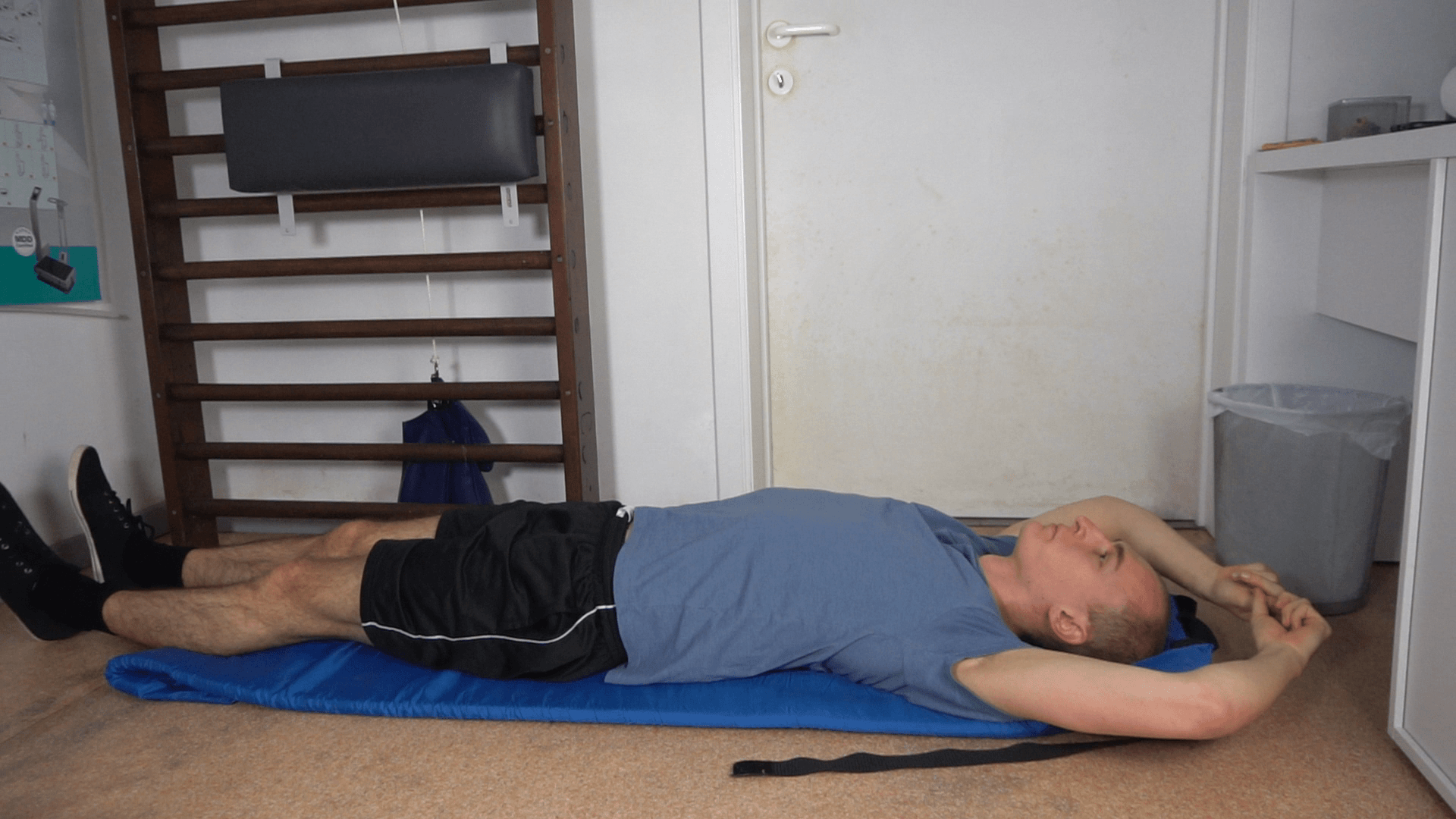
33. Scissor crunch
For scissor crunches, also known as scissor kicks, you lie down on your back, preferably on a relatively soft yet sturdy surface.
To do the exercise you press your lower back against the ground with your ab muscles. Raise your legs and move them sideways over each other alternately.
Scissor crunches engage your abs in an isometric, static, way while your leg movements make it harder for your ab muscles to keep your lower back pressed against the ground.
This exercise can be a fun way to switch up your core workouts but in general, the crunch variations that engage your abs in a more static way will be more effective.

34. Toe crunch
Toe crunches, also known as lying toe touches, are an exercise where you lie down on your back, raise your legs more or less vertically, and reach towards your toes with your hands.
This exercise is very similar to vertical leg crunches instead of the position of your arms. The effects of both types of crunches are basically the same.

35. Clapping crunch
For clapping crunches you start lying down on your back, preferably on a soft surface, with your legs stretched. Next, you raise your legs off the ground. During the actual repetitions you keep both feet off the ground.
To do the repetitions, bring one knee towards the chest of that side. At the same time, crunch up your shoulders and clap with your hands behind the moving leg. After that, return to starting position and repeat the movement with the other leg.
The actual clapping does not do much for your core training. However, keeping your feet off the ground during the crunches does require some extra ab muscle engagement.
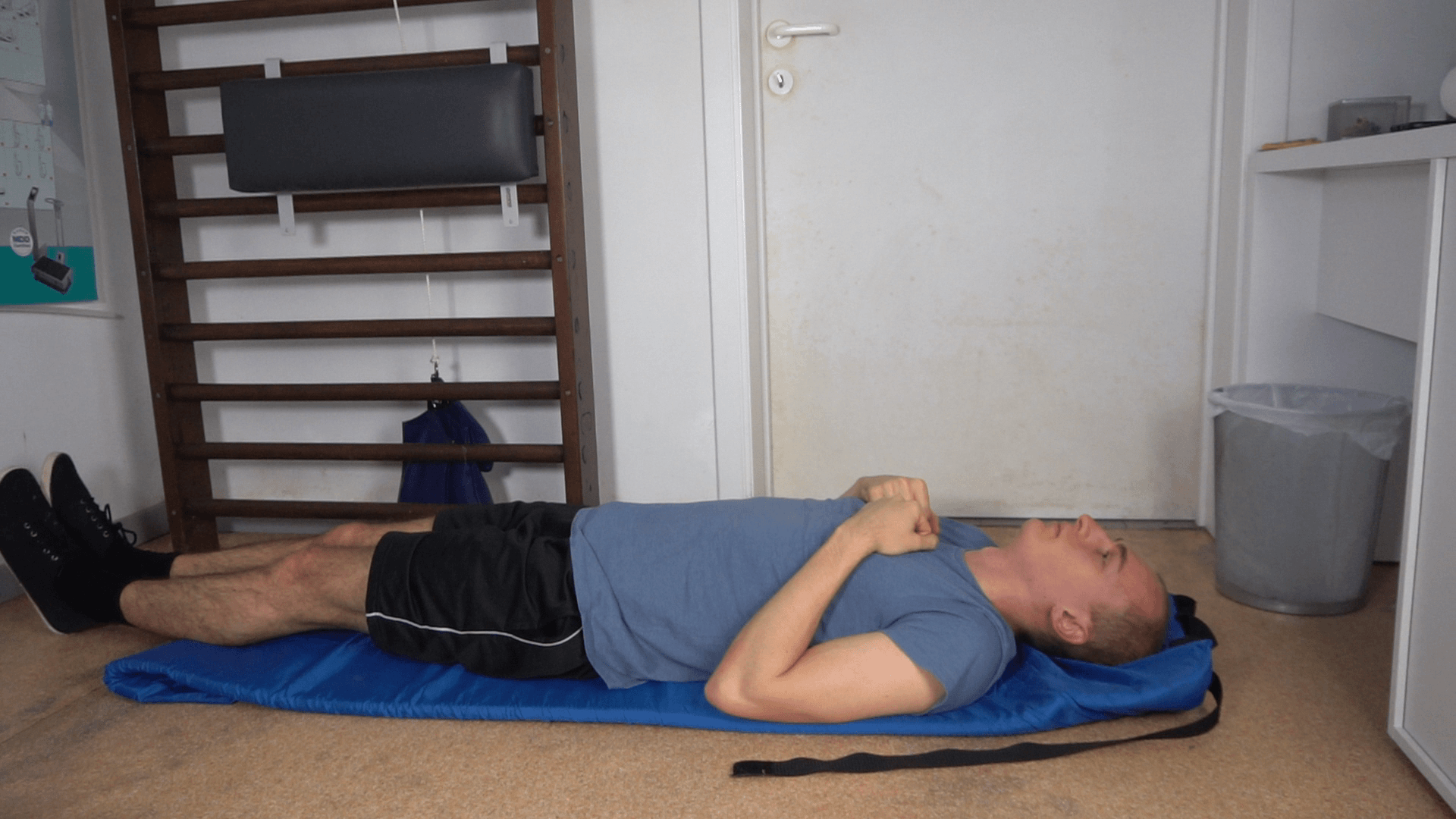
36. Straight leg crunch
The next crunch type is simply doing regular crunches but instead of putting your feet flat on the ground, you keep your legs stretched and on the ground.
This version is slightly more uncomfortable on your back and potentially leads to a bit more hip flexor engagement. For these reasons, most people should not do straight leg crunches.
37. Super crunch
Super crunches are basically a sequence of other crunch variations. First, you crunch sideways to one side, then sideways to the other side, and finally, you do a regular shoulder crunch.
By doing this you engage both your oblique and ab muscles. Generally, you can see more results by doing complete sets of each type of crunch.

38. Butterfly crunch
For the next type of crunch, you put the bottom of your feet against each other and push down your knees as far as comfortable. Besides that, butterfly crunches work the same as the standard version.
By using the different leg position from this crunch variation you stretch your hip adductors on top of giving your ab muscles a good workout.

39. Frog crunch
To do a frog crunch you start lying down on your back with the bottom of your feet against each other and knees pushed down as far as comfortable. After that, you crunch up both your hips and shoulders.
Compared to a regular crunch, this variation focuses more on the lower part of your ab muscles. Additionally, you stretch your hip adductor muscles to some extent.

40. Crunch pulses
Crunch pulses are basically regular crunches but instead of going through the full range of motion, you go up and down a small amount at the top of the movement.
This is generally not helpful for muscle growth and strength progress. This exercise does switch up your core workouts a little bit.
41. Runner’s crunch
Runner’s crunches are a crunch variation where you move one shoulder and the knee of the opposite side towards each other while moving your arms similar to running.
The extra leg movements and arm movements are more to switch up your core workout than effectiveness. These movements could even make the exercise easier on your core muscles if you use your arms and legs for momentum.
That being said, compared to regular crunches, the runner’s type does engage your oblique muscles more.
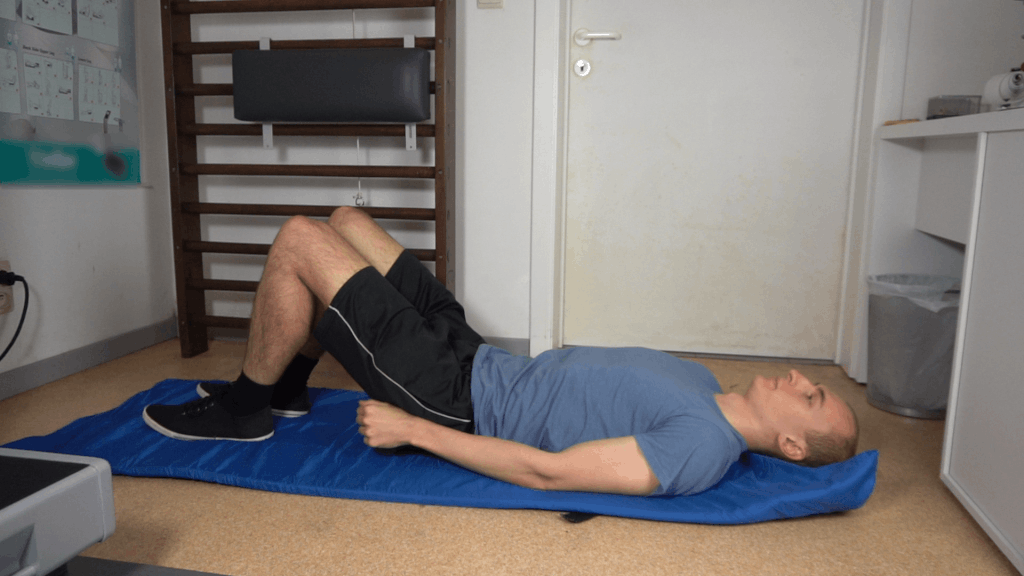
42. Prayer crunch
During prayer crunches you hold your knees slightly away from each other and your hands against each other with stretched arms. Make sure you don’t swing with your arms so that your ab muscles still do most of the work.
Besides offering a bit more variation compared to just holding your arms against your chest, prayer crunches do not really offer any additional benefits over regular crunches.
You even potentially reduce the effectiveness of the exercise if you swing your arms too much.

43. V crunch
This next variation is almost more of a sit-up variation. To do a V crunch you raise your shoulders and even lower back off the ground and move your hips and knees towards your chest at the same time
Similar to many of the other options on this list, you can stretch your arms above your head to make the exercise harder. Make sure you still mainly use your abs to do the movement if core training is your goal.

